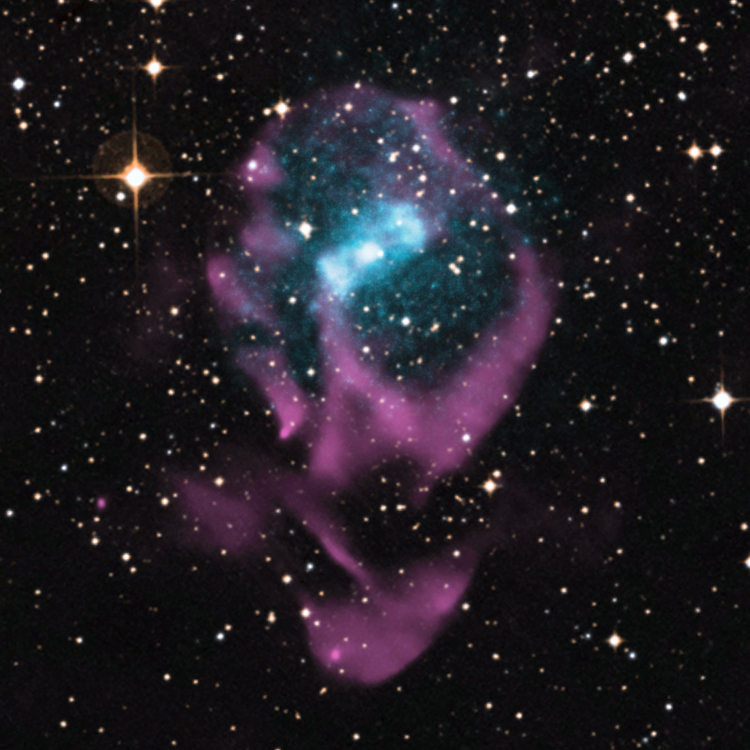
 Credit: X-ray: NASA/CXC/Univ. of Wisconsin-Madison/S. Heinz et al; Optical: DSS; Radio: CSIRO/ATNF/ATCA
Credit: X-ray: NASA/CXC/Univ. of Wisconsin-Madison/S. Heinz et al; Optical: DSS; Radio: CSIRO/ATNF/ATCA
The Youngest X-ray Binary
Neutron stars are the tiny compact cores left behind when a massive star dies and explodes as a supernova. Neutron stars represent matter under the most extreme gravitational conditions that we can directly observe. Neutron stars which are found in binary systems offer an important opportunity for astronomers to measure the gravitational pull between the neutron star and its companion star, providing (in principal) a direct measure of the mass of the neutron star. These neutron-star binary systems are often marked by bright X-ray emission, generated by accretion onto the neutron star of material pulled from the companion star. Study of X-ray binaries (in principle) can show how this accretion process affects the evolution of the neutron star, if the age of the X-ray binary can be determined. In general this is difficult to do, and until recently only one X-ray binary system (the peculiar system SS 433) had its age estimated. But a recent observation of the X-ray binary Circinus X-1 has enabled astronomers to determine the age of this important X-ray binary. Cir X-1 is usually one of the brightest X-ray binaries known, but its X-ray emission is also very erratic, and it has other characteristics which have puzzled astronomers since its discovery in 1969. Observations with the Chandra X-ray Observatory, obtained when the X-ray emission from Cir X-1 was very faint, detected extended X-ray emission produced by the supernova explosion which created the neutron star. The image above is a composite of the X-ray emission (in purple), and a radio image (in blue, from ATCA) superimposed on an optical Digitized Sky Survey image. The radio emission is centered on the system itself (and shows extended emission associated with particle jets produced by the neutron star), while the X-ray emission is more extended, produced by hot gas created as the outer layers of the exploded star plows into the interstellar gas around the system. The temperature of the X-ray emitting gas is related to the speed of the hot material, and, from the measured extent of the gas, implies that the supernova occurred no more than 4600 years ago. This makes Cir X-1 the youngest X-ray binary known.
Published: December 9, 2013
<
HEA Dictionary ● Archive
● Search HEAPOW
● Other Languages
● HEAPOW on Facebook
● Download all Images
● Education ● HEAD
>

Each week the HEASARC
brings you new, exciting and beautiful images from X-ray and Gamma ray
astronomy. Check back each week and be sure to check out the HEAPOW archive!
Page Author: Dr. Michael F. Corcoran
Last modified Monday, 26-Feb-2024 17:20:49 EST


